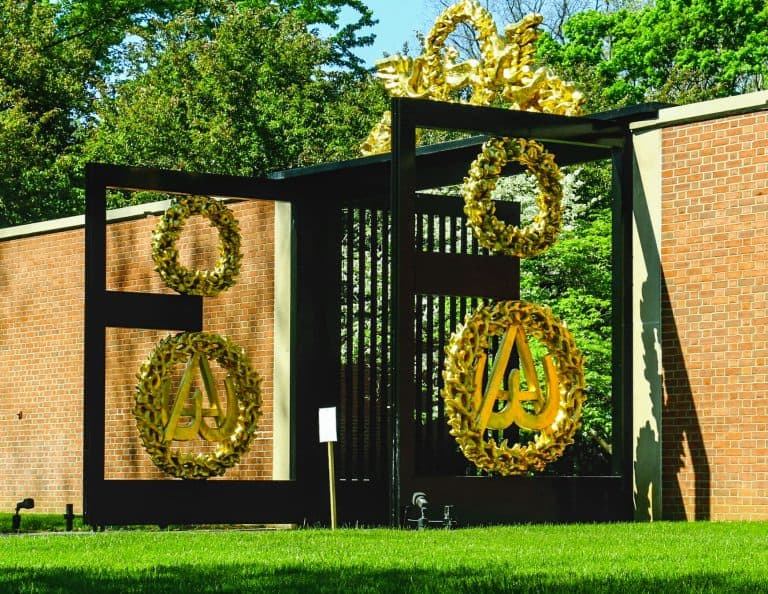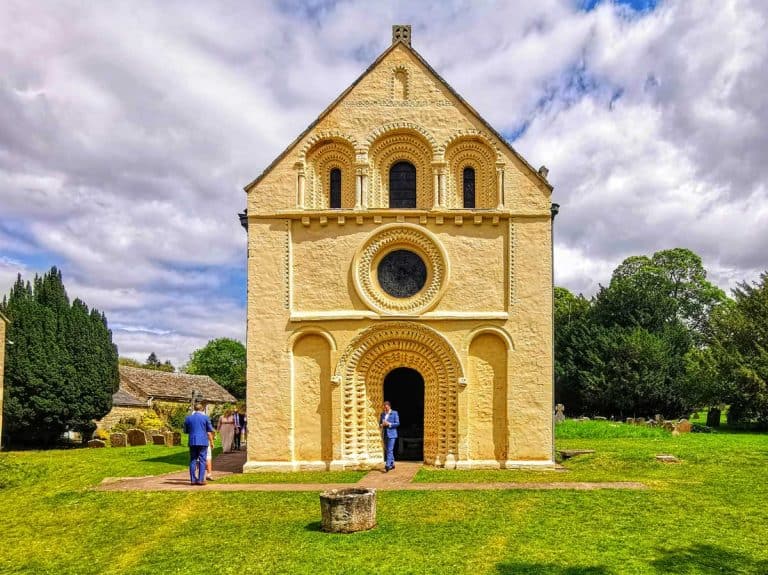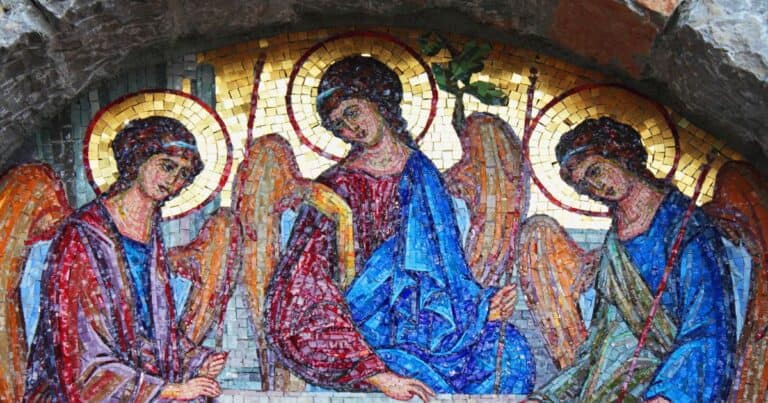By Teresa Trumbly Lamsam, Ph.D.
Christian sculptures, whether viewed through a lens of faith or an appreciation for history and art, provide a rich tapestry of stories and insights. They serve as a testament to both the spiritual journey of believers and the craftsmanship of artists over the centuries.
Just as pilgrims journey to sacred sites seeking connection, we can journey through the lens of art to explore Christian sculptures, their history, significance, and their stories. We created this post as a Guide to your journey. Use the Table of Contents to help you navigate to the sections that interest you the most.
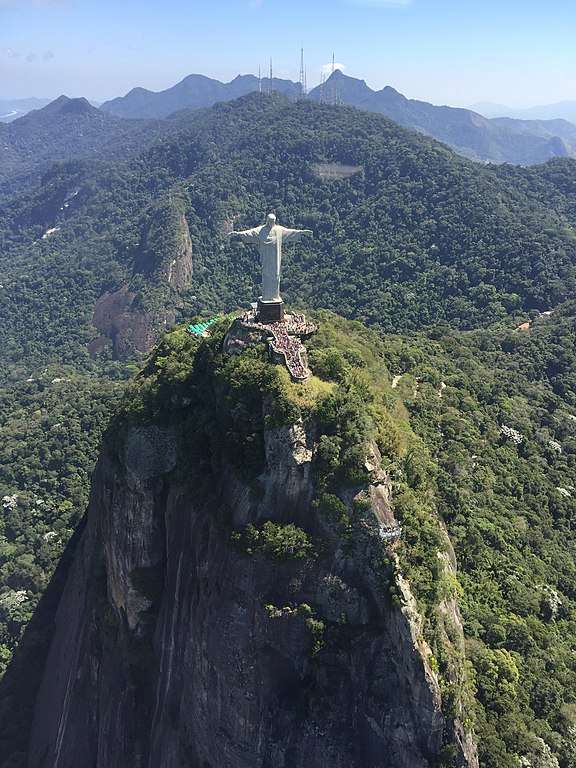
HIGHLIGHTS
Top 6 Notable Christian Sculptures
Pieta by Michelangelo
Marble art in St. Peter’s Basilica, Vatican. Mary cradles a lifeless Jesus. Renaissance masterpiece.
Christ the Redeemer
Towering statue overlooking Rio de Janeiro. Symbol of Brazil’s Christian heritage.
Sarcophagus Junius Bassus
Early Christian relief in the Vatican. Biblical tales carved in Greco-Roman style.
Ecstasy of St. Teresa
Marble work in Rome’s Cornaro Chapel. Depicts St. Teresa’s divine vision with an angel.
The Bronze David
Renaissance art in Florence. Shows a triumphant David post-Goliath battle.
The Last Judgment
Bronze in Paris. From “Gates of Hell,” figures from Dante’s “Inferno.”
Image: Usrotors, CC BY-SA 4.0, via Wikimedia Commons
Reasons Why People Like Viewing Sculptures
There are many reasons why people like viewing sculptures because it is such a personal experience. Here are the top reasons that resonate with me. You may have different reasons or more to add to the list.
- To appreciate the beauty and skill of the sculptor. Sculptures can be incredibly beautiful and intricate works of art. Taking years to create, they require a great deal of skill and talent. Not to mention, the sculptor takes years to develop that skill and talent in the first place.
- To connect with the subject matter of the sculpture. Sculptures often depict religious figures, historical events, or other meaningful subjects. Sculptures help me connect to the subject matter on a personal level.
- To learn more about history and culture. Sculptures can be a great way to learn more about history and culture. For example, a sculpture of a historical figure can teach us about their appearance, customs, cultural beliefs, and the time in which they lived.
- To be inspired and challenged. Sculptures can be a source of inspiration and challenge. They can make us think about the world in new ways and challenge our assumptions. For example, a sculpture that is abstract or unconventional might make us think about the nature of art and beauty.
Famous Christian Sculptures
The Last Judgment Tympanum
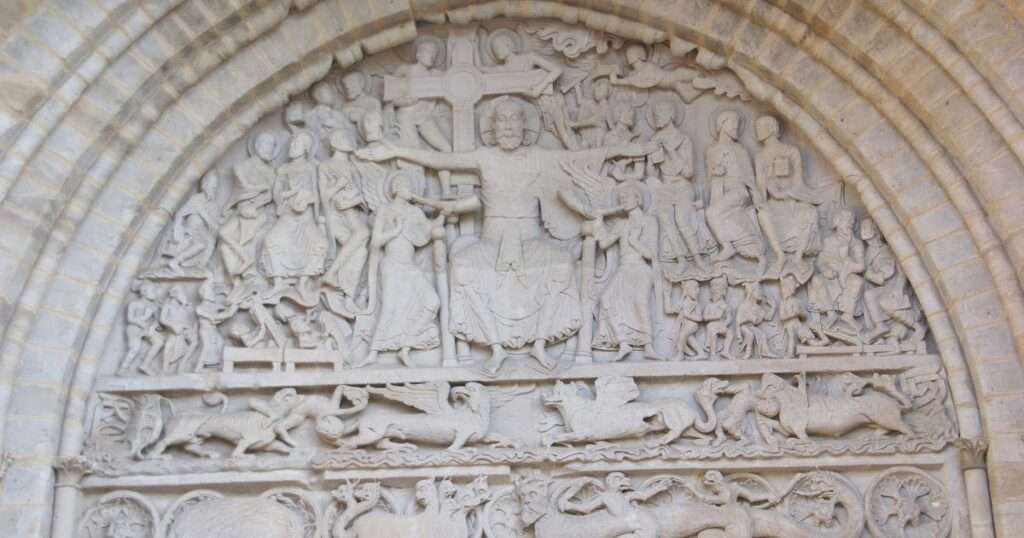
- Description: A grand sculptural depiction of the Last Judgment, showcasing Christ in the center with angels, apostles, and the resurrected dead around Him.
- Location: Cathedral of Saint-Lazare, Autun, France
- Created by and when: Gislebertus, around 1130 to 1146
- How long did it take to make: Exact duration unknown
- Materials: Stone
- Coordinates: 46.94525915698738, 4.299336174114594
The Saint-Lazare Cathedral, situated in Autun, Burgundy, France, is a prime example of 12th-century Romanesque architecture. Originally constructed to accommodate the influx of pilgrims traveling the Way of St. James to Santiago de Compostela, the cathedral became a significant pilgrimage destination in its own right, housing revered relics of Saint Lazarus.
The Well of Moses (Puits de Moïse)
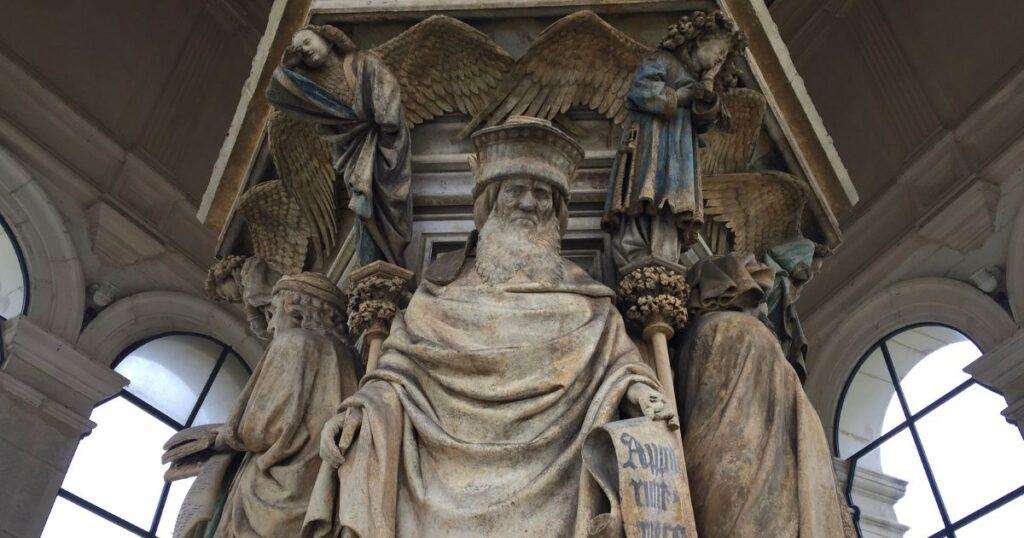
- Description: This hexagonal pedestal once supported a crucifix (now lost) and is adorned with lifelike statues of six Old Testament prophets. The detailed sculptures and the play of water (originally designed as a fountain) made it a masterpiece of its time.
- Location: Chartreuse de Champmol, Dijon, France
- Created by and when: Dutch artist Claus Sluter, between 1395 and 1405
- How long did it take to make: Approximately 10 years
- Materials: Limestone
- Coordinates: 47.32178055916793, 5.017535328488006
The Chartreuse de Champmol, often referred to as the Carthusian monastery of Champmol, was established on the outskirts of Dijon, France, in the late 14th century. It was founded by Philip the Bold, the Duke of Burgundy, as a burial place for the Valois Dukes of Burgundy. The complex was not just a simple monastery; it was intended to be a grand dynastic burial place, and as such, it was endowed with exceptional works of art and architecture.
Over the centuries, the monastery faced periods of decline, especially during the French Revolution when it was largely destroyed. Today, while the original monastic buildings no longer exist, the chapel and some of the art pieces, including the “Well of Moses,” remain. The site is now part of Dijon’s hospital, the Centre Hospitalier Spécialisé La Chartreuse.
Pieta by Michelangelo
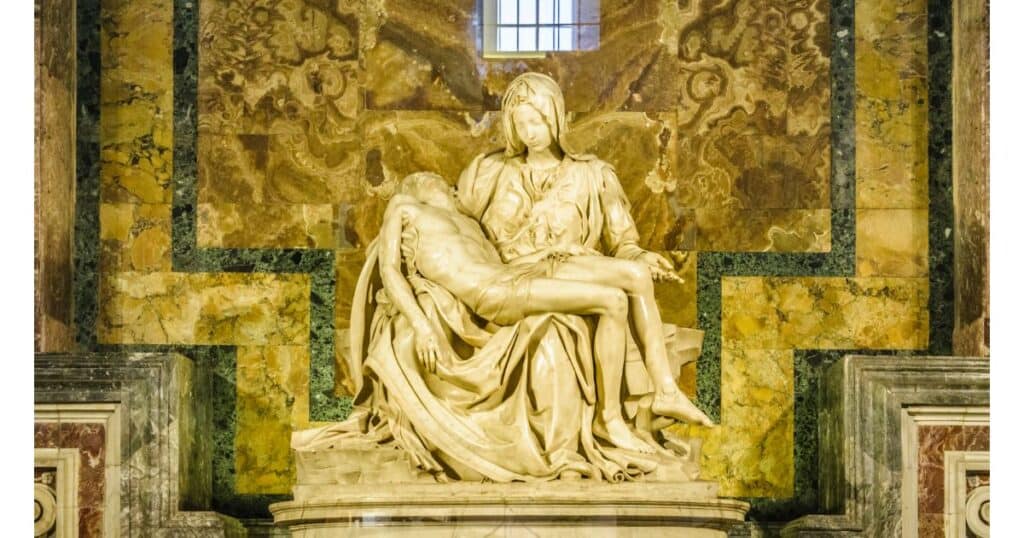
- Description: A heart-rending depiction of Mary cradling the lifeless body of Jesus after his crucifixion.
- Location: St. Peter’s Basilica, Vatican City
- Created by and when: Michelangelo, 1498–1499
- How long did it take to make: Approximately 1 year
- Materials: Marble
- Coordinates: 41.90235831876222, 12.453968883707557
St. Peter’s Basilica, located in Vatican City, is one of the largest and most significant churches in the world. As a central place of worship for Catholics, it stands atop the traditional burial site of the Apostle Peter, one of Christ’s disciples.
The basilica is renowned for its Renaissance and Baroque architecture, with contributions from illustrious artists and architects like Michelangelo, Bramante, and Bernini. Inside, the basilica houses numerous works of art, including Michelangelo’s “Pieta” and the opulent Baldachin by Bernini over the main altar.
Ecstasy of St. Teresa of Ávila by Bernini

- Description: A portrayal of St. Teresa’s vision where an angel pierces her heart with a divine arrow, representing her mystical union with God.
- Location: The Cornaro Chapel, Santa Maria della Vittoria, Rome
- Created by and when: Bernini, 1647–1652
- How long did it take to make: 5 years
- Materials: Marble
- Feast Day of Saint Teresa of Ávila: Oct. 15
- Coordinates: 41.90489241115589, 12.494358568367588
Located in the Santa Maria della Vittoria church in Rome, the Cornaro Chapel is a masterpiece of Baroque art and architecture. The chapel is most renowned for housing Gian Lorenzo Bernini’s breathtaking sculpture, “The Ecstasy of St. Teresa.”
The chapel also features theatrically staged, life-sized marble statues of the Cornaro family in opera boxes, appearing to discuss and admire the central mystical event. Their inclusion blurs the line between religious experience and theatrical presentation, a hallmark of the Baroque style.
St. Cecilia by Maderno
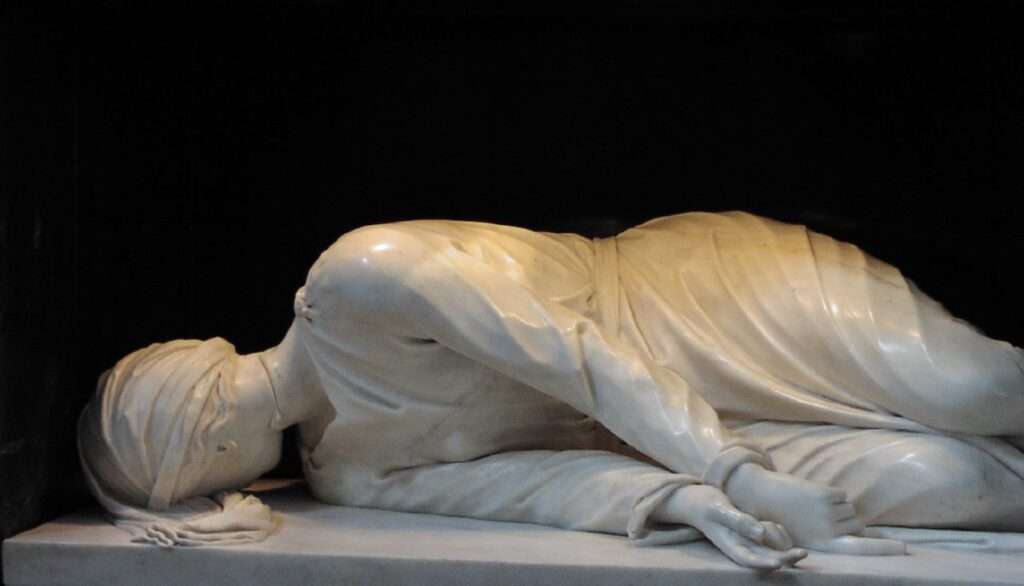
St. Cecilia by Maderno. Courtesy photo: Stefano Maderno , CC BY 2.0, via Wikimedia Commons
- Description: A lifelike representation of the martyr St. Cecilia, capturing the moment of her discovery in her final resting pose.
- Location: Basilica of Santa Cecilia in Trastevere, Rome
- Created by and when: Maderno, 1600
- How long did it take to make: Exact duration unknown
- Materials: Marble
- Feast Day of St. Cecilia: November 22
- Coordinates: 41.88779292421396, 12.476530884659857
The Basilica of Santa Cecilia is a historic church situated in the oldest area of Roman, the Trastevere district. Dedicated to Saint Cecilia, the patron saint of music and musicians. The basilica dates back to the 5th century and stands where the saint was believed to have been martyred. The church’s crypt, with its ancient relics and inscriptions, offers a glimpse into early Christian Rome.
St. Bartholomew Flayed by Marco d’Agrate
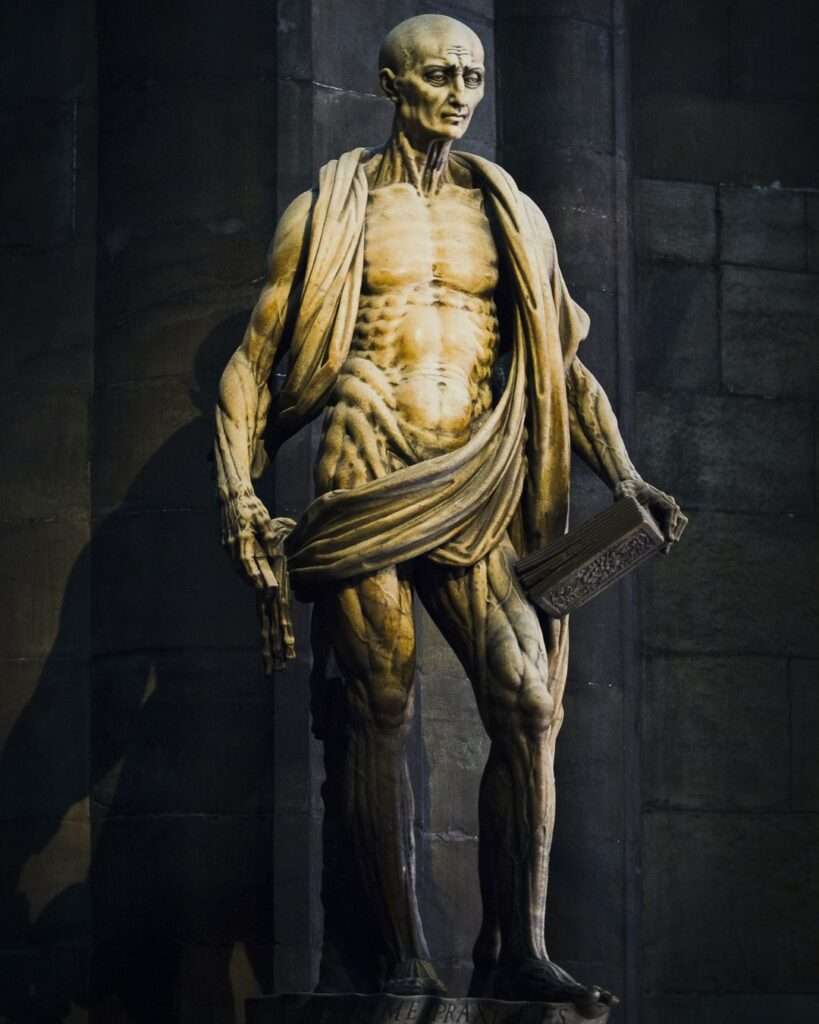
- Description: The statue is a life-size depiction of St. Bartholomew, one of the twelve apostles of Jesus Christ. Bartholomew is shown standing upright, holding his flayed skin in his left hand and a knife in his right hand.
- Location: The Cathedral of Milan (Duomo di Milano)
- Created by and when: Marco d’Agrate, 1563
- How long did it take to make: Exact duration unknown
- Materials: Bronze
- Feast Day of St. Bartholomew: August 24
- Coordinates: 45.46424056976553, 9.1919265
The Cathedral of Milan is the fifth-largest Christian church in the world and one of the most iconic landmarks in Milan, Italy. Construction began in the late 14th century and spanned several centuries, resulting in a blend of Gothic and Renaissance architectural styles. The cathedral is renowned for its intricate facades, towering spires, and stained-glass windows.
The Duomo di Milano is located in the heart of Milan, Italy, in the Piazza del Duomo. This is the central square of the city and is easily accessible by public transportation. You should expect crowds. The best time to visit is early in the morning or late in the afternoon when the crowds are smaller.
You may also enjoy:
Christ the Redeemer

- Description: An iconic statue of Jesus Christ with arms outstretched, overlooking the city of Rio de Janeiro.
- Location: Mount Corcovado, Rio de Janeiro, Brazil
- Created by and when: Designed by sculptor Paul Landowski and built by engineer Heitor da Silva Costa in collaboration with Albert Caquot, 1922-1931
- How long did it take to make: 9 years
- Materials: Soapstone and Concrete
- Coordinates: -22.95168877222694, -43.21050865767006
The statue is made of reinforced concrete and soapstone tiles and stands 98 feet (30 meters) tall, with its arms outstretched 92 feet (28 meters). It was inaugurated on October 12, 1931, the day of the patron saint of Brazil, Our Lady of Aparecida, whose feast day is observed on October 12.
Christ the Redeemer is located at the top of Corcovado Mountain, which overlooks the city of Rio de Janeiro. Visitors can reach the statue by cog railway, van, or on foot.
St. Wolfgang Altarpiece by Michael Pacher

- Description: A massive altarpiece combining sculpture, painting, and architecture, showcasing various scenes from the life of Saint Wolfgang and Christ.
- Location: Parish Church, St. Wolfgang, Austria
- Created by and when: Michael Pacher, 1479-81
- How long did it take to make: 2 years
- Materials: Polychrome pine
- Coordinates: 47.73815456880395, 13.447636484659858
The Parish of St. Wolfgang is a Roman Catholic parish church in the town of St. Wolfgang, Austria. It is dedicated to Saint Wolfgang, who founded a monastery on the site in the 10th century.
The most famous piece of art in the church is the high altar, a masterpiece of Gothic and Renaissance art created by Michael Pacher in the late 15th century.
Other notable works of Austrian Baroque art in the church include the pulpit by Thomas Schwanthaler and the choir stalls by Meinrad Guggenbichler.
The Bronze David by Donatello
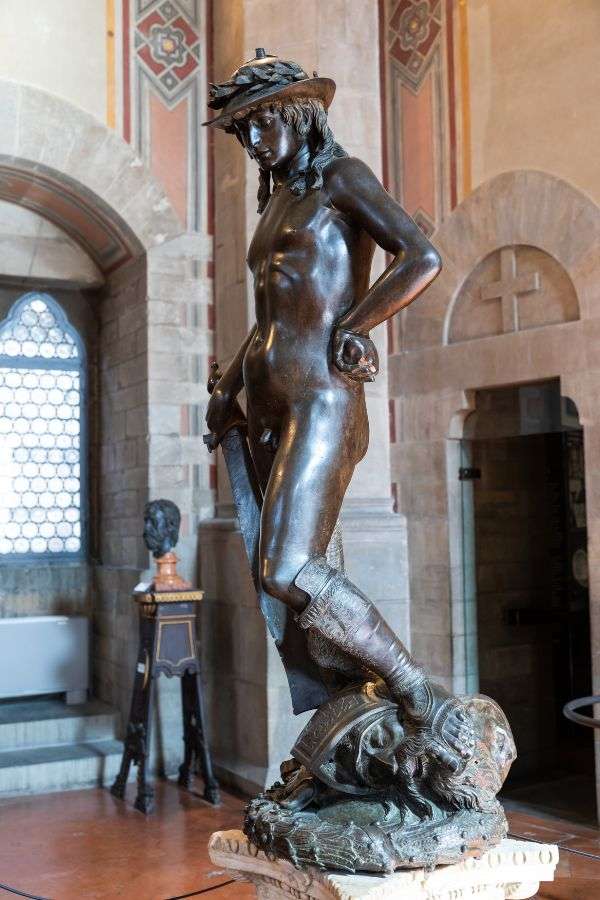
- Description: A representation of a youthful David, standing victoriously over the head of Goliath.
- Location: Museo Nazionale del Bargello, Florence, Italy
- Created by and when: Donatello, 1440s
- How long did it take to make: Exact duration unknown
- Materials: Bronze
- Coordinates: 43.770591757847534, 11.257997068443567
The Bargello Museum in Florence is a treasure trove of Renaissance sculpture. It houses works by some of the greatest artists of the period, including Michelangelo, Donatello, and Giambologna.
The museum is housed in the Palazzo del Bargello, a former prison that was converted into a museum in the 19th century. The building itself is a work of art, with its imposing facade and elegant interior.
The Gates of Hell by Auguste Rodin
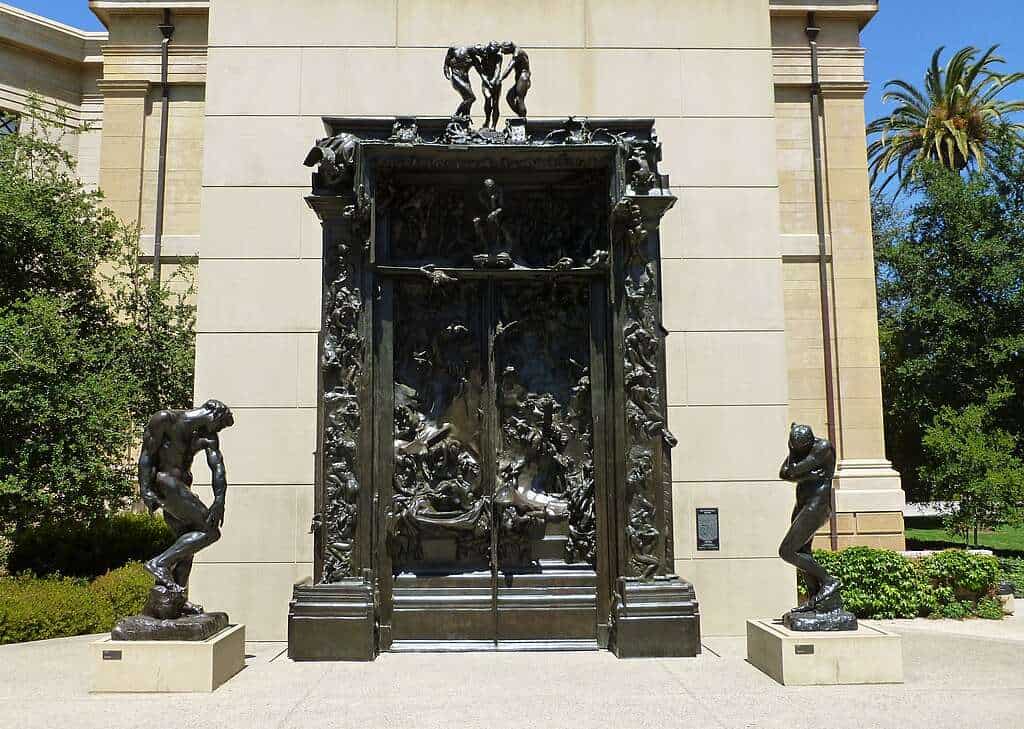
- Description: A monumental sculptural group depicting scenes from Dante’s Inferno, including the iconic “The Thinker.”
- Location: Musée d’Orsay in Paris
- Created by and when: Auguste Rodin, 1880–1917
- How long did it take to make: 37 years
- Materials: Plaster, later cast in bronze
- Coordinates: 48.860166067968514, 2.326550668663966
The Musée d’Orsay is home to a world-renowned collection of Impressionist, Post-Impressionist, and Art Nouveau art. Its collection includes some of the most famous works of art in the world, such as Monet’s Water Lilies, Van Gogh’s Starry Night, and Renoir’s Dance at Le Moulin de la Galette. The museum also has a collection of sculptures, including Rodin’s Thinker and The Kiss.
The Musée d’Orsay is located in the heart of Paris, and it is easily accessible by public transportation. The museum is open every day except for Mondays.
Christ of the Abyss by Guido Galletti
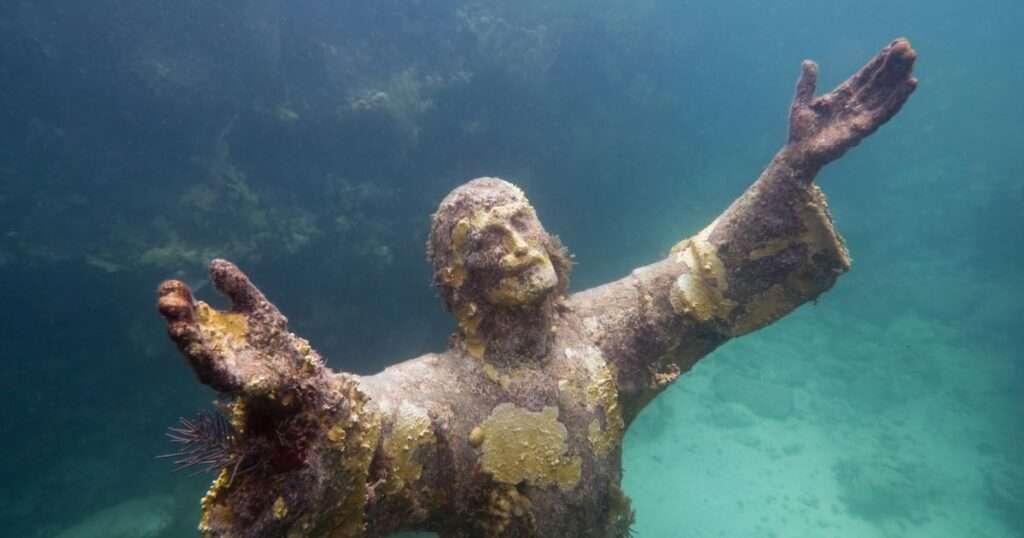
- Description: An underwater statue of Jesus Christ, submerged in the Mediterranean Sea, symbolizing peace and protection.
- Location: Mediterranean Sea, off San Fruttuoso, Italy
- Created by and when: Guido Galletti, 1954
- How long did it take to make: Exact duration unknown
- Materials: Bronze
- Coordinates: 44.313524243031665, 9.175104442329927
You can visit the Christ of the Abyss, but it requires scuba diving certification. The statue is located at a depth of approximately 17 meters (56 feet), so it is not accessible to swimmers.
If you are interested in visiting the Christ of the Abyss, there are a number of dive shops in San Fruttuoso that offer guided tours. You can also book a private tour with a certified dive instructor.
Our Lady of the Rosary at Fatima by José Ferreira Thedim

- Description: A statue depicting the Virgin Mary as she appeared to three shepherd children in Fatima.
- Location: Sanctuary of Our Lady of Fátima, Portugal
- Created by and when: José Ferreira Thedim, 1920
- How long did it take to make: Exact duration unknown
- Materials: Wood
- Coordinates: 39.67971220065354, -8.67645317490627
The Sanctuary of Our Lady of Fátima is a Roman Catholic shrine and pilgrimage complex located in Cova da Iria, Fátima, Portugal. It is one of the most important pilgrimage sites in the world, and it is visited by millions of people each year.
The Sanctuary is dedicated to the Virgin Mary, who is said to have appeared to three shepherd children in Cova da Iria in 1917. The children reported that the Virgin Mary gave them messages about the future, and she asked them to pray for peace and to spread her message to the world.
Moses by Michelangelo
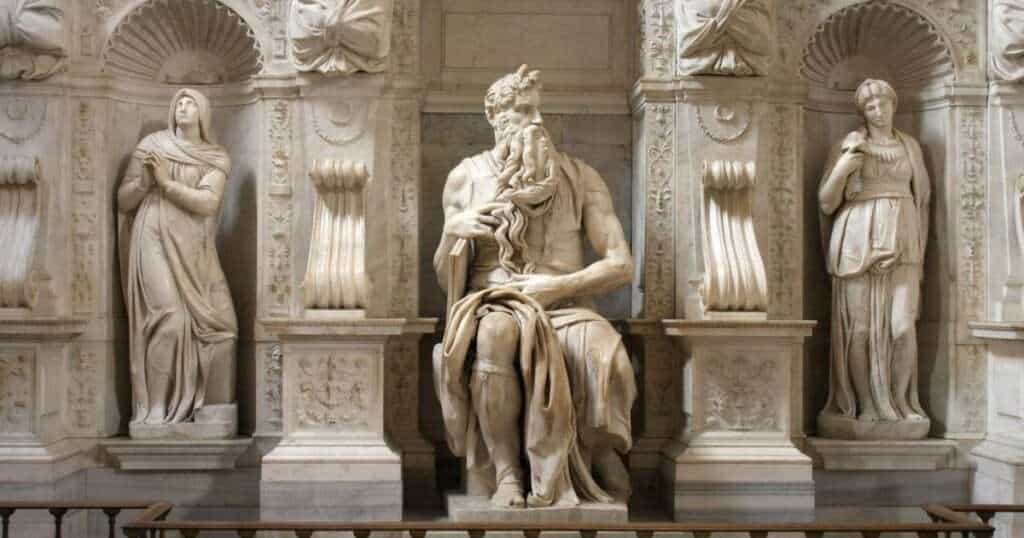
- Description: A seated sculpture of Moses, showcasing him with horns, a common medieval European symbol of wisdom and enlightenment.
- Location: Basilica of San Pietro (St. Peter) in Vincoli, Rome
- Created by and when: Michelangelo, 1513-1515
- How long did it take to make: 2 years
- Materials: Marble
- Coordinates: 41.89435916181868, 12.492861915340143
The Basilica of San Pietro in Vincoli (Saint Peter in Chains) is a Roman Catholic titular church and minor basilica in Rome, Italy. It is best known for being the home of Michelangelo’s statue of Moses, part of the tomb of Pope Julius II.
The church was built in the 5th century to house the relics of the chains that were said to have bound Saint Peter during his imprisonment in Jerusalem. The chains are now kept in a reliquary under the high altar.
David by Michelangelo
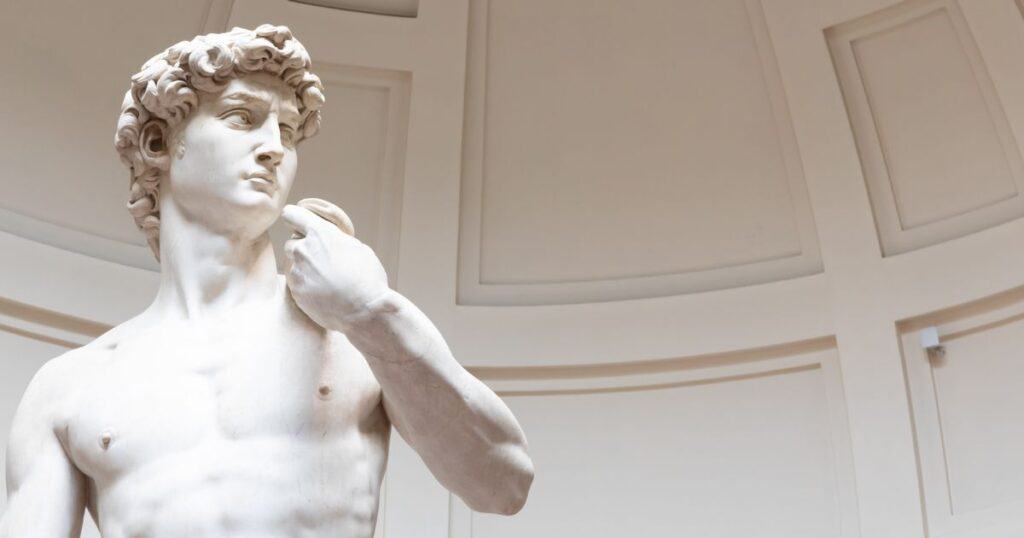
- Description: A monumental statue of the biblical hero David, captured in a moment of contemplative resolve before his battle with Goliath.
- Location: Galleria dell’Accademia, Florence
- Created by and when: Michelangelo, 1501-1504
- How long did it take to make: 3 years
- Materials: Marble
- Coordinates: 43.77696943282654, 11.258685315340141
The Academy Gallery, its name in English, is housed in the former Convent of San Niccolò di Cafaggio. The convent was built in the 14th century, but it was extensively remodeled in the 16th century. The museum was opened in 1873.
The Galleria dell’Accademia is one of the most popular tourist attractions in Florence. The statue of David is located in the Tribune Room, which is the most popular room in the museum. Be prepared to wait in line to see it.
The Risen Christ by Michelangelo

Tetraktys, CC BY-SA 3.0, via Wikimedia Commons
- Description: A sculpture of Christ, free from the cross, holding the cross’s staff in his left hand.
- Location: Basilica di Santa Maria sopra Minerva, Rome
- Created by and when: Michelangelo, 1519-1521
- How long did it take to make: 2 years
- Materials: Marble
- Coordinates: 41.898140502169696, 12.478022597202287
The Basilica di Santa Maria sopra Minerva is located in the Piazza della Minerva in Rome, Italy. It is one of the most important churches of the Dominican Order in Rome.
The church was built in the 13th century on the site of a former temple dedicated to the Roman goddess Minerva. The church’s name, Santa Maria sopra Minerva, means “Saint Mary above Minerva.”
The Basilica di Santa Maria sopra Minerva is a Gothic-style church with a nave and two aisles. The church’s interior is decorated with frescoes by Filippo Lippi and Fra Angelico. The church is also home to the tomb of Pope Gregory XIII, who commissioned the construction of the Gregorian calendar.
The Tomb of Antipope John XXIII

Courtesy photo: Dimitris Kamaras from Athens, Greece, CC BY 2.0, via Wikimedia Commons
- Description: A monumental tomb for Baldassare Cossa, known as Antipope John XXIII. The tomb is adorned with numerous sculptures, including the figures of the three theological virtues: Faith, Hope, and Charity.
- Location: Baptistery of San Giovanni, Florence, Italy
- Created by and when: Donatello and Michelozzo, 1425-1437
- How long did it take to make: Approximately 12 years
- Materials: Marble and bronze
- Feast Day of San Giovanni: June 24
- Coordinates: 43.77330904904746, 11.255033926113684
The Baptistery of San Giovanni is a Romanesque baptistery located in the Piazza del Duomo in Florence, Italy. A popular tourist destination, it is considered to be one of the finest examples of Romanesque architecture in Italy.
The Baptistery was built in the 11th and 12th centuries and is octagonal in shape. The exterior of the baptistery is covered in white, green, and red marble and is decorated with sculptures and reliefs. The interior of the baptistery is also decorated with sculptures and reliefs, but the most famous feature of the interior is the mosaic dome.
The Byzantine mosaic dome was created in the 13th century and depicts scenes from the Old and New Testaments.
The Annunciation

- Description: Two separate sculptures depicting the Angel Gabriel and the Virgin Mary at the moment of the Annunciation.
- Location: Basilica of Saint Anastasia, Verona, Italy
- Created by and when: Niccolò, around 1433-1436
- How long did it take to make: Approximately 3 years
- Materials: Marble
- Feast Day of Anastasia of Sirmium: December 25
- Coordinates: 45.44528974342003, 10.999586582008872
[Note: I could not find permission to use a photo of this sculpture; however, you may view it on this site.]
The Basilica of St. Anastasia in Verona, Italy is a large and impressive Gothic church. It is the largest church in Verona and is dedicated to Saint Anastasia, a fourth-century martyr.
The construction of the basilica began in 1290 and was completed in the 14th century. The church was built on the site of a former Romanesque church. The basilica is built in the Gothic style and is characterized by its pointed arches, ribbed vaults, and stained-glass windows.
The interior of the basilica is decorated with frescoes by various artists, including Pisanello and Altichiero. The church is also home to a number of important works of art, including the Pellegrini Chapel, which contains a fresco by Pisanello of Saint George and the Princess.
The Shrine of the Three Kings

- Description: A large, gilded sarcophagus that is believed to hold the remains of the Three Wise Men.
- Location: Cologne Cathedral, Cologne, Germany
- Created by and when: Nicholas of Verdun, around 1190-1220
- How long did it take to make: Approximately 30 years
- Materials: Gold and precious gemstones
- Coordinates: 50.94148794414444, 6.9583135840994395
This towering Gothic cathedral is a UNESCO World Heritage Site and one of the most visited tourist attractions in the country.
Construction on Cologne Cathedral began in 1248, but it wasn’t until 1880 that it was finally completed. The cathedral is built in the High Gothic style and is characterized by its soaring spires, intricate stained glass windows, and impressive vaulted ceilings.
The Shrine of the Three Kings is located behind and above the high altar in Cologne Cathedral, Germany. It is a large gilded and decorated triple sarcophagus that is said to contain the bones of the Biblical Magi, also known as the Three Kings or the Three Wise Men.
The Shrine of the Three Kings is one of the most important pilgrimage sites in Germany and is visited by millions yearly. It is a masterpiece of Mosan art and is considered the largest reliquary in the Western world.
To get to the Shrine of the Three Kings, you can enter Cologne Cathedral through the main entrance on the west side. Once inside, walk to the back of the cathedral and up the steps to the high altar. The Shrine of the Three Kings is located behind and above the high altar.
The Pórtico da Gloria
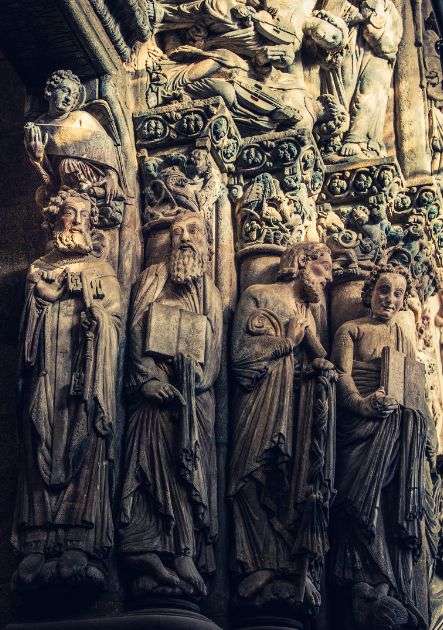
- Description: A Romanesque portico with numerous statues, including figures of prophets, apostles, and the twenty-four elders of the Apocalypse playing musical instruments.
- Location: Santiago de Compostela Cathedral, Spain
- Created by and when: Master Mateo, 1168-1188
- How long did it take to make: 20 years
- Materials: Stone
- Coordinates: 42.880868792139836, -8.544416860428072
Santiago de Compostela Cathedral is a magnificent Romanesque cathedral located in the city of Santiago de Compostela in northwestern Spain. It is one of the most important pilgrimage sites in the Christian world, and is the final destination of the Camino de Santiago, a network of pilgrimage routes that have been followed by pilgrims for centuries.
The construction of Santiago de Compostela Cathedral began in 1075 and was completed in the 12th century. The cathedral is characterized by its massive stone walls, barrel-vaulted ceilings, and intricate carvings.
Inside the cathedral, there are a number of important works of art, including the Pórtico da Gloria, a Romanesque portal that is decorated with sculptures of the Last Judgment. The cathedral is also home to the tomb of Saint James the Great, one of the apostles of Jesus Christ.
Santiago de Compostela Cathedral is a UNESCO World Heritage Site and is one of the most popular tourist destinations in Spain.
Discover more on the “Porch of Glory” on Google Arts and Culture: Follow this link.
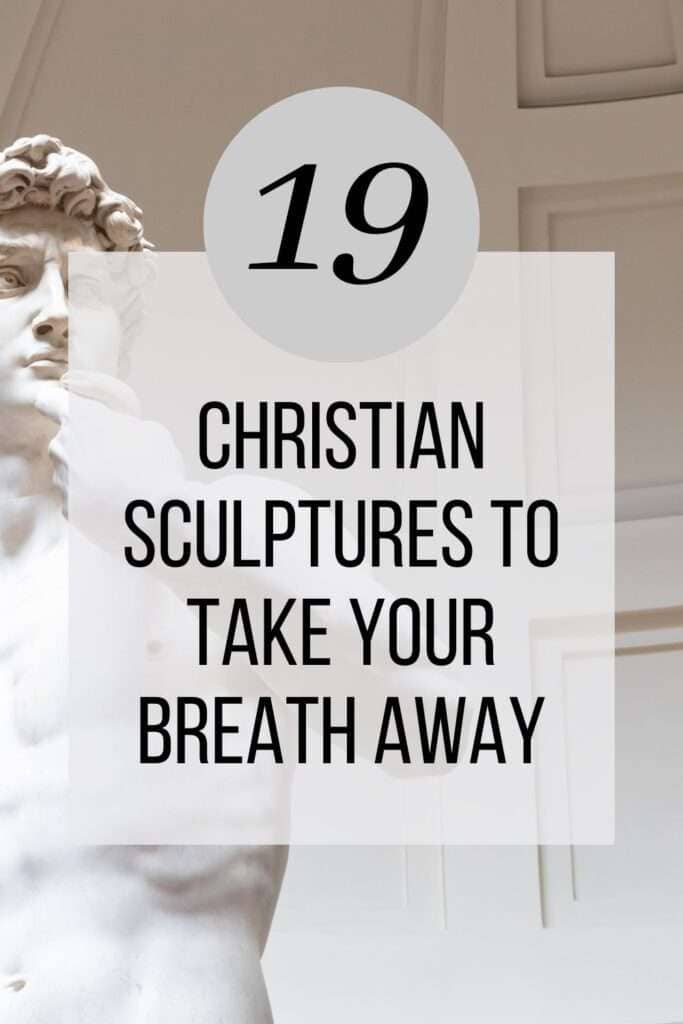
Historical Context of Christian Sculptures
Art, as we’ve come to understand, is often a reflection of the times and cultures that birth it. In the realm of Christian sculptures, the historical backdrop is as varied as the pieces themselves.
The Influence of Rome and the Greco-Roman Style
The Roman Empire, with its vast territories and cultural amalgamations, was a significant catalyst in shaping early Christian art. As Christianity began to take root within the empire, it was inevitable that the prevailing artistic styles would leave their mark.
The Greco-Roman style, characterized by its emphasis on proportion, realism, and the human form, became a foundational influence. However, instead of gods and heroes from Greek and Roman myths, the subjects now were figures and stories from the Bible, rendered with the same classical finesse.
Early Christian Sculptures and Their Biblical Inspirations
The initial Christian sculptures were discreet, often symbolic rather than overt. Christians couldn’t afford to expose themselves to the Romans, who persecuted and killed them. Symbols like the fish, the Good Shepherd, and the chi-rho (an early Christogram) were prevalent.
As the faith grew and was supported by the Romans, more direct representations emerged. Scenes from the Old and New Testaments were carved into sarcophagi, walls of catacombs, and later, the interiors of grand basilicas.
These sculptures served dual purposes: They were educational tools in an era when many were illiterate, and they were also devotional aids, helping believers connect more deeply with the stories and teachings of their faith.
In Medieval times, leaders in Florence and elsewhere would “sanctify” their cities with Christian art, including sculptures, to surround their citizens with the trappings of religious devotion, according to scholarship by Christopher A. Tiegreen.[1] Whether the effort was genuine or not is up for debate.
Views Toward Christian Sculptures
It’s worth noting that not all Christians agree with the use of Christian art, and this debate has continued throughout the centuries. Many Christians – then and now – view sculptures as idolatry.
Historically, the use of sculptures and images in Christian worship has been a contentious issue, leading to significant theological and cultural debates, not to mention church splits. The Iconoclastic Controversy of the 8th and 9th centuries is a prime example.
During this period, the Byzantine Empire experienced a series of religious upheavals, with iconoclasts (those opposed to using religious images) clashing with iconodules (those in favor of them). The iconoclasts believed that the veneration of icons, especially sculptures, was tantamount to idol worship and thus a violation of the Second Commandment, which prohibits the making and worshiping of graven images.
On the other hand, proponents of Christian art argued that sculptures and images were not objects of worship but rather tools to aid in devotion and to educate the faithful. They believed that these artworks provided a tangible connection to God, helping believers to contemplate the mysteries of faith.
The Seventh Ecumenical Council of Nicaea in 787 AD ultimately affirmed the veneration (but not worship) of icons and sculptures, setting a precedent for their continued use in many Christian traditions.
In contemporary times, the debate has mellowed, but nuances remain. While many modern Christian denominations appreciate art as an expression of faith and a reflection of divine beauty, there are still groups and individuals who prefer austere places of worship, devoid of sculptures and images, to ensure that the focus remains solely on God.
Final Thoughts
The world of Christian sculptures is a captivating journey through time, artistry, and faith. These masterpieces, spanning centuries and continents, offer profound insights into the spiritual quests and artistic endeavors of generations past.
It’s evident that they are more than just stone and chisel work; they are embodiments of devotion, passion, and the eternal human spirit. Whether you’re exploring the grandeur of cathedrals or the quiet corners of a parish church, may these sculptures inspire a deeper appreciation for the confluence of art and faith.
Whether reading about the sculptures or visiting these sites, consider how you can experience the history and artistry they represent. I write these posts to stem the tide of loss of history and craftsmanship.
Which ones have you seen in person? Let me know in the comments below.
[1] Tiegreen, C. A. (2021). Heaven on Earth in Medieval Europe: Material Expressions of an Immaterial Realm. (Doctoral dissertation, Georgia State University).

Teresa Trumbly Lamsam, Ph.D., is an accomplished Social Scientist and Journalist. Passionate about establishing credibility in the digital realm, she champions transparent and trustworthy online content. She is dedicated to producing content that sparks curiosity and nourishes the heart and mind.


